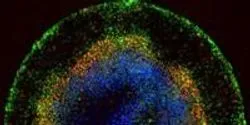Stem Cells

About seven days after conception, something remarkable occurs in the clump of cells that will eventually become a new human being. They start to specialize. They take on characteristics that begin to hint at their ultimate fate as part of the skin, brain, muscle or any of the roughly 200 cell types that exist in people, and they start to form distinct layers.

Merck Millipore, the Life Science division of Merck, today (June 17) launched Simplicon™ RNA Reprogramming Technology, which uses synthetic self-replicating RNA to create large numbers of human induced pluripotent stem cells (iPSCs) using a single transfection step. This efficient reprogramming of somatic cells is accomplished without viral intermediates or host genome integration, offering a more defined and safer system for iPSC generation.

The gap between stem cell research and regenerative medicine just became a lot narrower, thanks to a new technique that coaxes stem cells, with potential to become any tissue type, to take the first step to specialization. It is the first time this critical step has been demonstrated in a laboratory.

University of Adelaide researchers have discovered that stem cells taken from teeth can grow to resemble brain cells, suggesting they could one day be used in the brain as a therapy for stroke.

As stem cells continue their gradual transition from the lab to the clinic, a research group at the University of Wisconsin-Madison has discovered a new way to make large concentrations of skeletal muscle cells and muscle progenitors from human stem cells.













